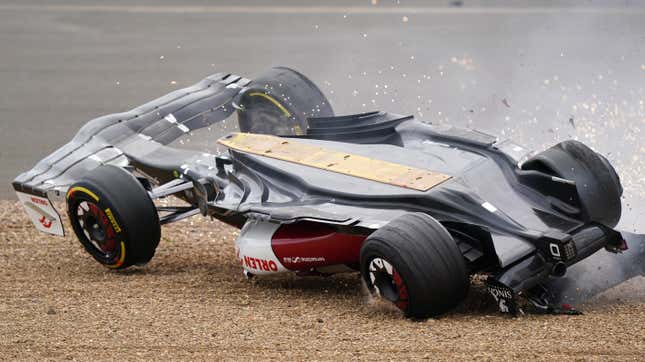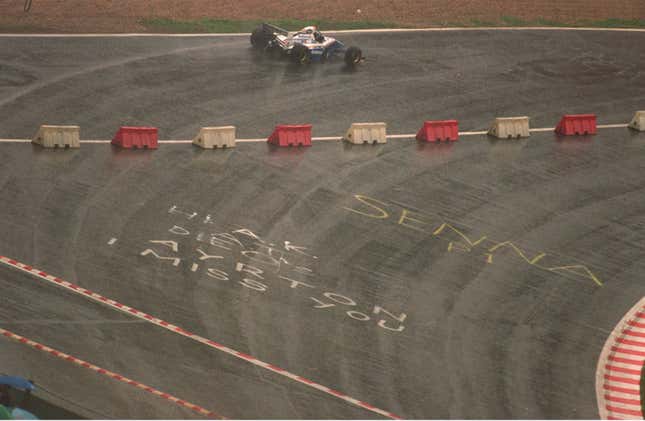
Lewis Hamilton and Charles Leclerc were disqualified from the United States Grand Prix Sunday after their cars failed post-race inspection. What was the infraction? The floor-mounted wood resin planks on both their cars were worn too thin. It seems ridiculous to throw out a driver over a board three-eighths of an inch thick, but the simple device is one of Formula 1’s best safety measures.
Every Formula 1 car has a ten-millimeter thick plank of glass-reinforced plastic bolted down the center of the underside. If a car is bottoming out against the track surface, the plank will be sanded away. The aim is to prevent teams from running their cars with dangerously low ride heights. Race officials won’t hesitate to disqualify a driver if over a millimeter of the board wears away during a race like last weekend.

The FIA, the sport’s governing body, mandated the skids after Ayrton Senna’s fatal crash at the 1994 San Marino Grand Prix. Bottoming out was the root cause of the legendary Brazilian driver’s death. During a restart before the crash, Senna was seen complaining that the safety car driver was going too slowly.
Senna struggled to get heat into his Williams FW16’s tires, which lowered tire pressure and the car’s ride height. The Williams would then bottom out while taking Tamburello left-hand corner at 190 miles per hour, stalling the car’s aerodynamics. Senna would be a passenger as the car speared straight off the track and into a concrete wall, killing him.
Aerodynamics has always been an aspect of technical development in Formula 1. Teams initially aimed to reduce drag to maximize straight-line speeds, but the focus would shift to generating downforce. The late 1970s would see teams use the chassis itself to produce downforce with ground effects. The FIA would mandate flat-bottomed cars in the 1980s, but the genie was out of the bottoms and still wanted to have as low a ride height as possible.

The FIA knew it needed to prevent bottoming out in high-speed corners and took desperate measures to accomplish it. Temporary chicanes were quickly added onto circuits across the schedule to reduce speeds, including Spa-Francorchamps’ flat-out Eau Rouge-Radillon complex. Teams were also mandated to punch holes into their airboxes to reduce engine power.

The planks were the only knee-jerk fix that stood the test of time because of its simplicity and effectiveness. It was initially made of wood but was replaced with the current fire-resistant Permaglass composite a few years later. The device ensures that teams won’t run the cars too low, and officials can easily measure the plank’s thickness using pre-cut holes. It shows that the best solution is sometimes the simplest.

